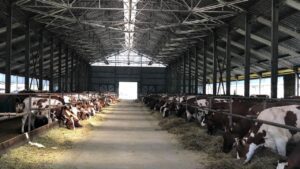
President of Ukraine Volodymyr Zelensky and his wife Olena took part in the ceremony of sending off the national team for the XVI Summer Paralympic Games in Tokyo (Japan), noting that now it will become a tradition, the press service of the head of state said.
“First of all, I think we need to apologize to you on behalf of our state, the institution of the President, for the fact that no President was personally present at sending off our Paralympians to both Summer and Winter Games in all these years. I think it’s a shame, but we’ll fix it. It is an honor for me and my wife to be here. You are the pride and glory of our sport, our country, our will and spirit. And each of you is an example of unbroken spirit and unlimited possibilities,” the press service quoted the President as saying.
Zelensky noted that the Ukrainian Paralympic team had won 374 medals at the Summer and Winter Games over the years, and expressed confidence that there would be more than 400 medals after the Paralympics in Tokyo.
The President also noted the symbolic date of the beginning of the XVI Summer Paralympic Games – August 24, the day of the 30th anniversary of Ukraine’s independence.
“Regardless of the result, I believe that all of you are already champions, already winners. And all these 30 years you have been one of those who nurtures our independence and inspires our country to never give up. So I am very grateful to you, just like every Ukrainian. And I believe that you will confirm this again in the next two weeks in Japan,” he said.
The President stressed that the Ukrainian authorities – the government, local authorities and relevant agencies – should resolve as soon as possible the issue of a professional summer base for Ukrainian Paralympians, which “should never have any problems with funding.”
“It is our duty to show respect for everything you do for our country. Once again, I sincerely wish you success in Tokyo! Inspire! Win! We will sincerely support you and we will wait for you!” added Zelensky.
NATIONAL TEAM, PARALYMPIC GAMES, PRESIDENT ZELENSKY, UKRAINIAN PRESIDENT

Grano Trade LLC (Kyiv) intends to build a full-cycle pig farm in the village of Zabilivschyna (Chernihiv region), designed for the constant maintenance of 250 sows producing up to 8,600 marketable piglets per year, according to the data of the Unified Register of Environmental Impact Assessment of the Ministry of Environmental Protection and Natural Resources of Ukraine.
According to the published data, the construction of the farm is planned on a plot with a total area of 9.63 hectares, leased by Grano Trade. Previously, no livestock activities were carried out on this territory.
It is clarified that the project includes the construction of a pigsty for 250 animals, a fattening pigsty, a feed room, a sanitary inspection room, a solid fuel boiler house, a loading ramp, a sanitary slaughterhouse, a plant for thermal destruction of animal by-products, closed manure storage facilities, two artesian wells and other auxiliary buildings.
The enterprise under construction provides for a technological process according to Danish technology, based on keeping separate groups of animals in special rooms with their differentiated feeding. The pigs are planned to be kept on slatted floors without bedding with the equipment of the premises with a system of self-removal of animal waste.
The project of the pig complex provides for a full three-phase cycle of breeding marketable piglets, consisting of a 28-day breeding cycle, a 53-day rearing cycle and an 86-day piglet feeding cycle. Thus, the cycle from birth to shipment of marketable animals for slaughter is 167 days, which makes it possible to implement two complete livestock breeding cycles per year (total – 8,600 animals per year).
According to the register, the expansion of the enterprise’s capacity will contribute to an increase in the range of meat products in the region, increase tax revenues to the local budget and create new jobs.
According to the Unified State Register of Legal Entities and Individual Entrepreneurs, Lion Konovaliuk is the ultimate beneficiary of Grano Trade LLC.
According to the data on the company’s website, the main activity of Grano Trade is the purchase and trading of basic agricultural crops: wheat, corn, barley, sunflower and rapeseed. Grano Trade cooperates with more than 1,000 agricultural producers with a land bank from 3,000 to 20,000 hectares.
ENVIRONMENTAL PROTECTION, FARM, GRANO TRADE, NATURAL RESOURCES

The Turkish manufacturer of drones Baykar is developing an investment project to build a research center for advanced technologies in aerospace engineering and a production center for drone assembly in Ukraine, Deputy Director General for Investments Natalya Ozden has said.
“Baykar intends to invest in Ukraine, and is currently developing a corresponding investment project,” she said during the International Defense Investment Forum in Kyiv.
According to her, the project provides for 100% investment by Baykar in the creation of a new research and development center, the creation of production facilities and drone assembly, as well as maintenance and repair shops with accompanying services.
At the same time, according to Ozden, there is a need for discussion about the incentives existing in Ukraine to support investors, in particular, those provided for by the laws on supporting projects with significant investments (the law on investment nannies) and on industrial parks.
“Investors want to come to Ukraine, and there are laws on supporting projects with significant investments, on industrial parks. But they do not work yet, we expect mechanisms for their implementation, and if we compare these projects, we see that the law on industrial parks provides more advantages than the law on investment projects,” she said.
She recalled that the law on investment nannies provides up to 30% of assistance from the state, but stressed that a foreign investor, when choosing a country for investment, compares several countries and opportunities, and chooses the most appropriate incentives for him.
Baykar was founded more than 30 years ago, and during this time has gone from a manufacturer of car parts to the world’s leading manufacturer of drones with 1,600 employees.

The debut International Defense Investment Forum, dedicated to the search for new directions in the development of Ukraine’s defense industry, which featured about 20 investment projects, was held in Kyiv at the Sikorsky Challenge (National Technical University of Ukraine “Ihor Sikorsky Kyiv Polytechnic Institute”) on Thursday.
“The authorities have an understanding of the existing problems and the need to take all measures aimed at improving the current investment climate in the country,” Deputy Prime Minister for Strategic Industries Oleh Urusky said, opening the forum.
He said that the recently adopted laws On Defense Procurement should remove excessive secrecy in the defense industry and ensure transparency of procurement and On the peculiarities of reforming the state-owned defense industry should facilitate the attraction of investment and private business in the sector, according to which on the basis of Ukroboronprom two holding companies will be created.
Urusky also said that the Ministry for Strategic Industries of Ukraine has developed a Strategy for the Development of Ukraine’s Defense Industry until 2030. According to him, given the nature of modern wars and conflicts, the main directions in the development and production of domestic weapons and military equipment were: automated control systems; rocket and space technology; high-precision means of destruction, ammunition and products of special chemistry; means of electronic warfare; unmanned platforms and shock robotics; “soldier of the future” equipment.
During the forum, which was attended by a delegation from the UAE led by the Mariam bint Mohammed Saeed Hareb Almheiri, about 20 investment projects were presented in three areas: high-precision weapons and ammunition; robotic equipment: air, ground and marine components; automation of control and communication system.
In particular, “Shock unmanned aerial vehicle complex with barrage ammunition ST-35 Thunder (LLC NPP Athlon Avia), Organization of lines for the production of large caliber cartridges 12.7×99; 12.7×108; 14,5х114 for small arms (LLC Stiletto Ukraine) and Unmanned robotic platforms Scorpion 2 and Dwarf scout (LLC Infocom).
Among other projects – “Universal robotic remote-controlled combat module/Project ACHILLES” (LLC Diamond Defense Systems), Light BPAK battlefield Yatagan-2 with a swarm function (LLC First Contact).

German Chancellor Angela Merkel will visit Russia on August 20 and will travel to Ukraine on August 22, German government spokesperson Steffen Seibert told reporters in Berlin on Friday.
“The chancellor will visit Moscow on Friday and Kyiv on Sunday,” Seibert said.

Ukraine in January-July 2021 reduced earnings from electricity exports by 28.1% (by $53.052 million) compared to the same period in 2020, to $135.612 million, according to data from the State Customs Service.
According to the calculations of Interfax-Ukraine, in January-July 2021 electricity for $59.339 million was supplied to Hungary, Poland for $39.783 million, Romania for $21.204 million, other countries for $15.286 million.
In July 2021 alone, electricity was exported for $27.373 million versus $5.505 million in July 2020.
In addition, in January-July of this year, Ukraine imported electricity for $59.058 million versus $110.005 million in the same period last year. Electricity exported from Belarus was worth $24.702 million, Slovakia – $22.401 million, Russia – $5.388 million, other countries – $6.567 million.